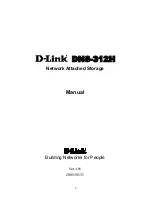
Chapter 7. Software support
281
In extending the use of adapter interruptions to OSD (QDIO) channels, the processor
utilization to handle a traditional I/O interruption is reduced. This benefits OSA-Express
TCP/IP support in z/VM, z/VSE, and Linux on z Systems.
Adapter interruptions apply to all of the OSA-Express5S and OSA-Express4S features on
z13s when in QDIO mode (CHPID type OSD).
7.3.67 OSA Dynamic LAN idle
The OSA Dynamic LAN idle parameter change helps reduce latency and improve
performance by dynamically adjusting the inbound blocking algorithm. System administrators
can authorize the TCP/IP stack to enable a dynamic setting that previously was static.
For latency-sensitive applications, the blocking algorithm is modified to be latency-sensitive.
For streaming (throughput-sensitive) applications, the blocking algorithm is adjusted to
maximize throughput. In all cases, the TCP/IP stack determines the best setting based on the
current system and environmental conditions, such as inbound workload volume, processor
utilization, and traffic patterns. It can then dynamically update the settings. OSA-Express5S
and OSA-Express4S features adapt to the changes, avoiding thrashing and frequent updates
to the OAT. Based on the TCP/IP settings, OSA holds the packets before presenting them to
the host. A dynamic setting is designed to avoid or minimize host interrupts.
OSA Dynamic LAN idle is supported by the OSA-Express5S, and OSA-Express4S features
on z13s when in QDIO mode (CHPID type OSD). It is used by z/OS V1R12 and higher
releases.
7.3.68 OSA Layer 3 virtual MAC for z/OS environments
To help simplify the infrastructure and facilitate load balancing when an LPAR is sharing an
OSA MAC address with another LPAR, each operating system instance can have its own
unique logical or virtual MAC (VMAC) address. All IP addresses that are associated with a
TCP/IP stack are accessible by using their own VMAC address instead of sharing the MAC
address of an OSA port. This situation also applies to Layer 3 mode and to an OSA port
spanned among channel subsystems.
OSA Layer 3 VMAC is supported by the OSA-Express5S and OSA-Express4S features on
z13s when in QDIO mode (CHPID type OSD). It is used by z/OS V1R12 and later.
7.3.69 QDIO Diagnostic Synchronization
QDIO Diagnostic Synchronization enables system programmers and network administrators
to coordinate and simultaneously capture both software and hardware traces. It allows z/OS
to signal OSA-Express5S and OSA-Express4S features (by using a diagnostic assist
function) to stop traces and capture the current trace records.
QDIO Diagnostic Synchronization is supported by the OSA-Express5S and OSA-Express4S
features on z13s when in QDIO mode (CHPID type OSD). It is used by z/OS V1R12 and later.
7.3.70 Network Traffic Analyzer
The z13s offers systems programmers and network administrators the ability to more easily
solve network problems despite high traffic. With the OSA-Express Network Traffic Analyzer
and QDIO Diagnostic Synchronization on the server, you can capture trace and trap data.
Summary of Contents for z13s
Page 2: ......
Page 3: ...International Technical Support Organization IBM z13s Technical Guide June 2016 SG24 8294 00 ...
Page 24: ...THIS PAGE INTENTIONALLY LEFT BLANK ...
Page 164: ...136 IBM z13s Technical Guide ...
Page 226: ...198 IBM z13s Technical Guide ...
Page 256: ...228 IBM z13s Technical Guide ...
Page 414: ...386 IBM z13s Technical Guide ...
Page 464: ...436 IBM z13s Technical Guide ...
Page 476: ...448 IBM z13s Technical Guide ...
Page 498: ...470 IBM z13s Technical Guide ...
Page 502: ...474 IBM z13s Technical Guide ...
Page 568: ...540 IBM z13s Technical Guide ...
Page 578: ...550 IBM z13s Technical Guide ...
Page 584: ...556 IBM z13s Technical Guide ...
Page 585: ...ISBN 0738441678 SG24 8294 00 1 0 spine 0 875 1 498 460 788 pages IBM z13s Technical Guide ...
Page 586: ......
Page 587: ......
Page 588: ...ibm com redbooks Printed in U S A Back cover ISBN 0738441678 SG24 8294 00 ...
















































